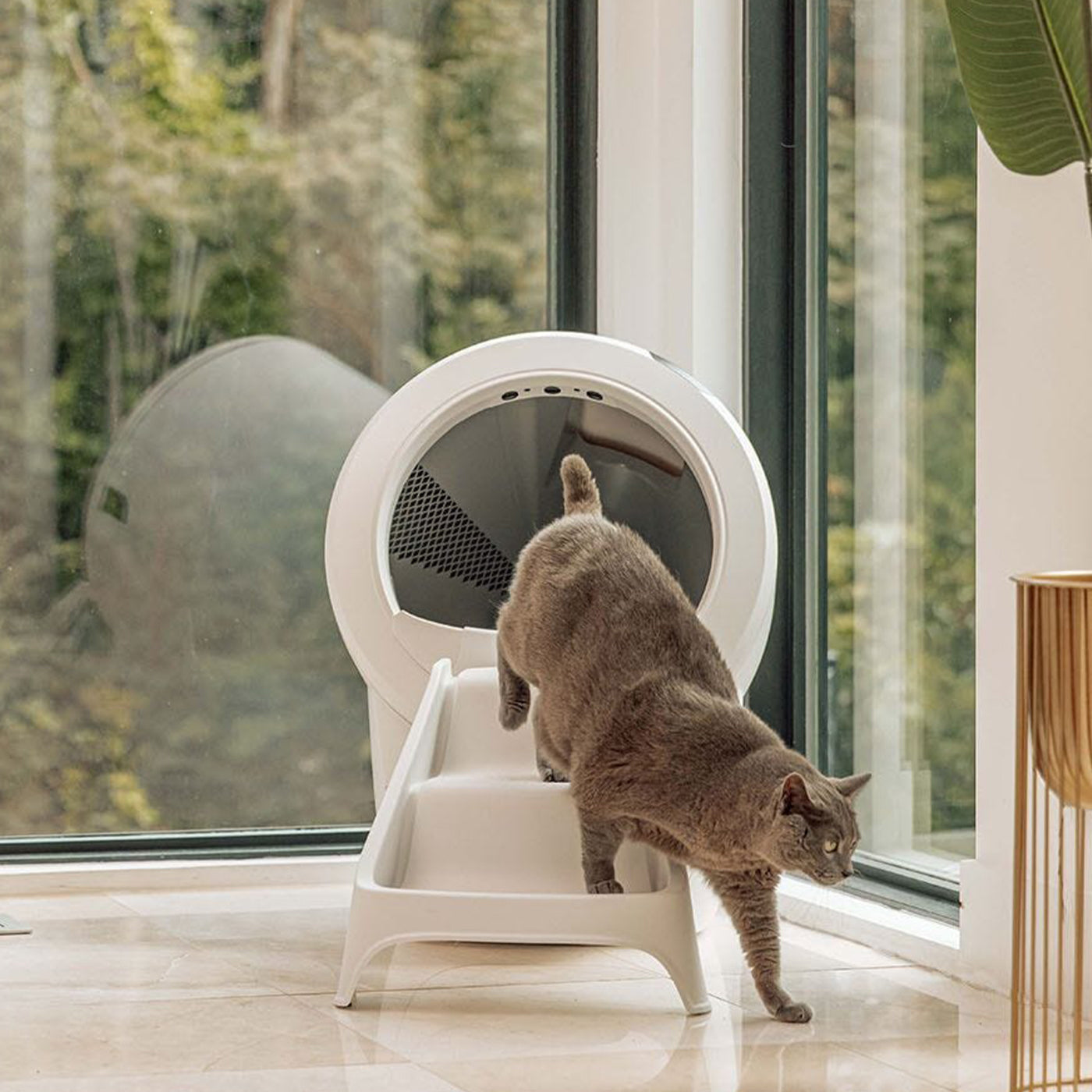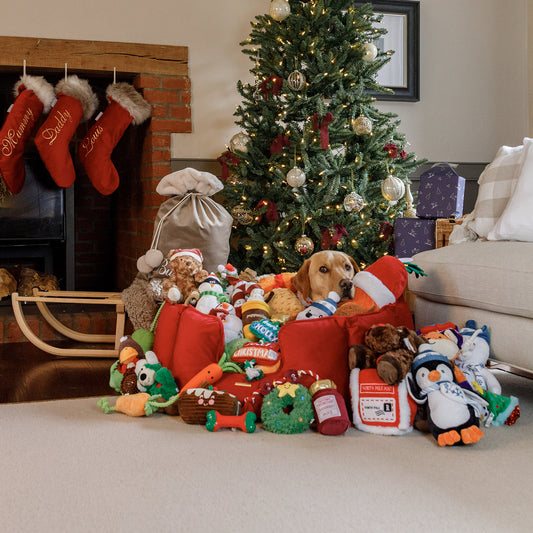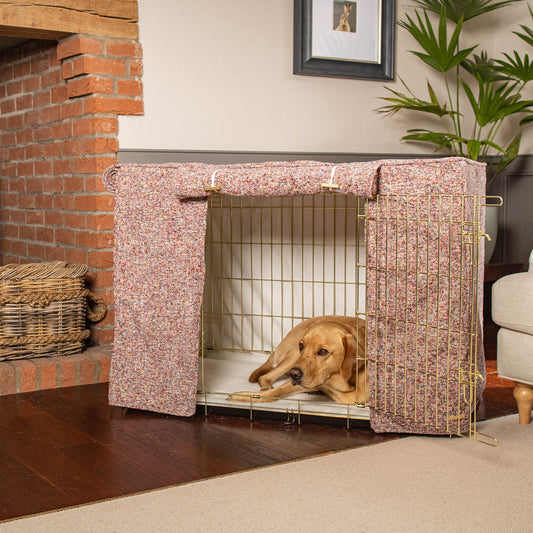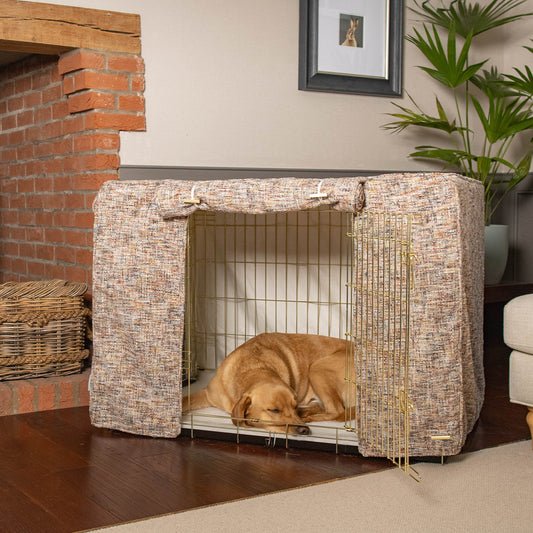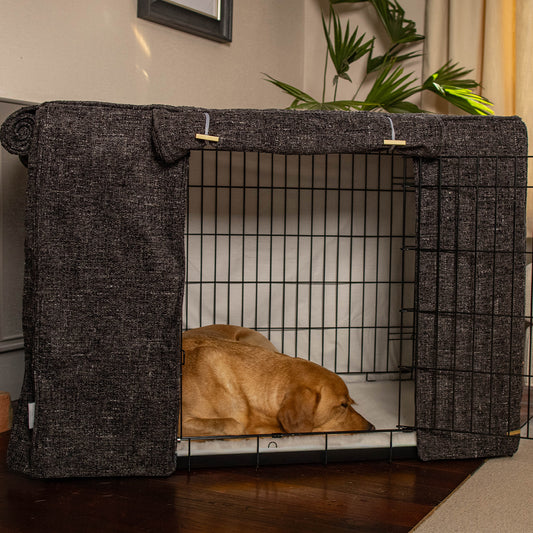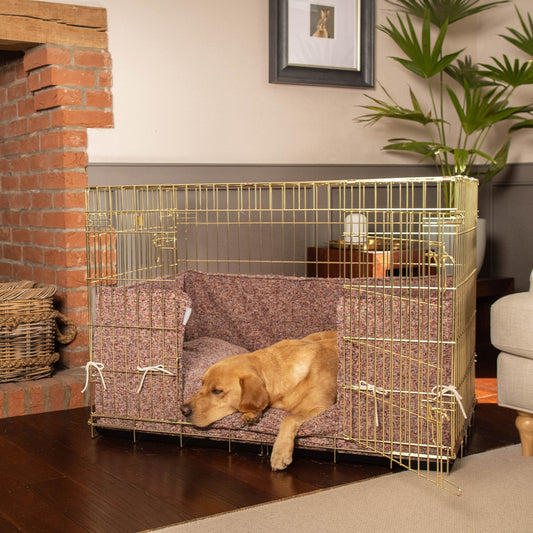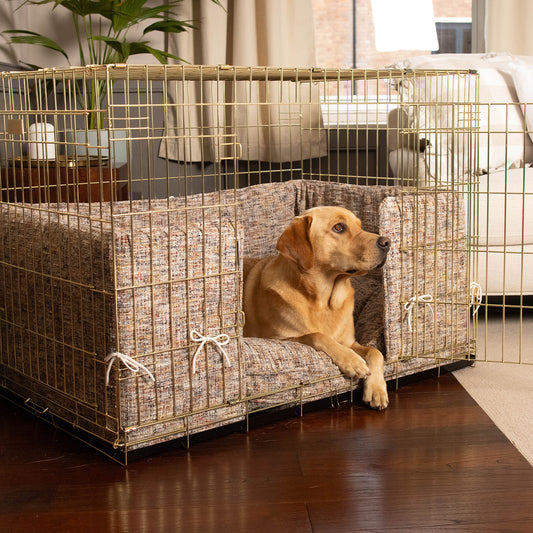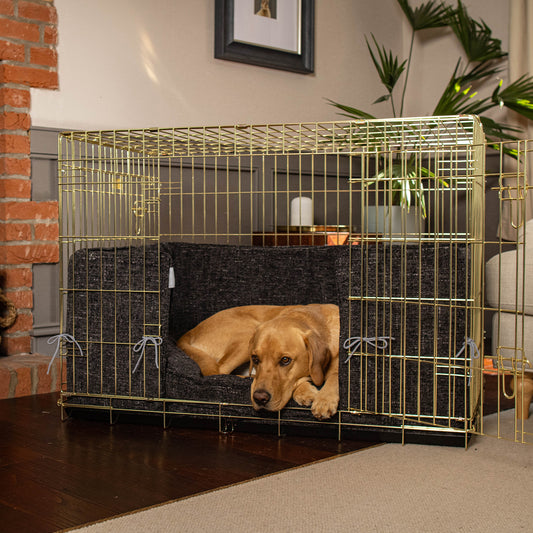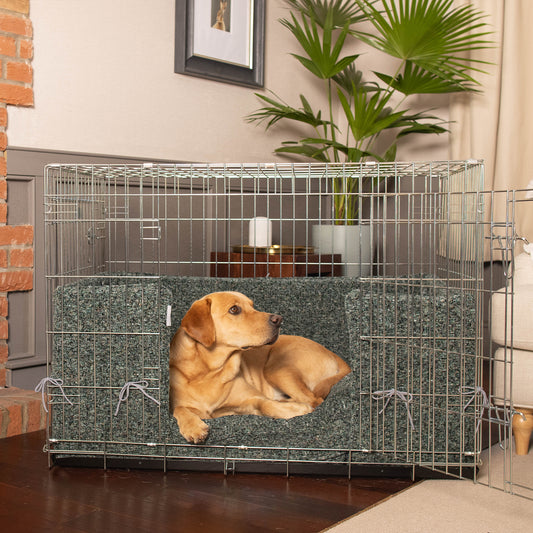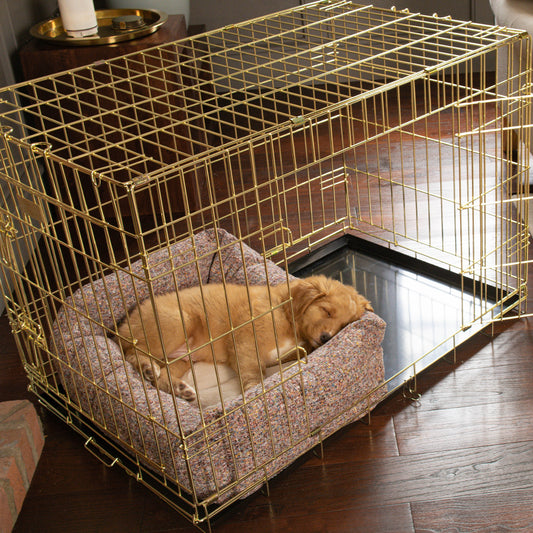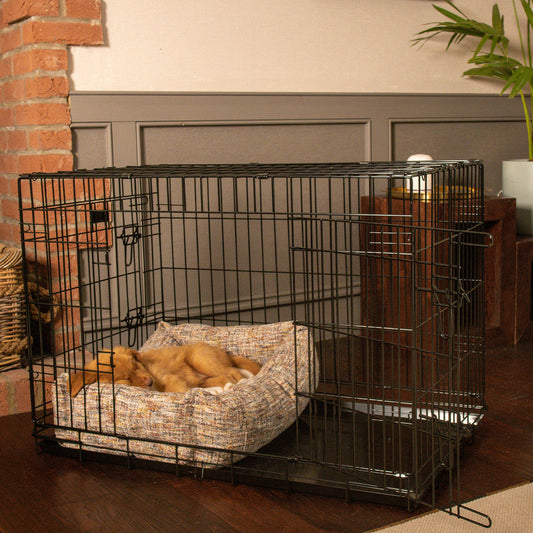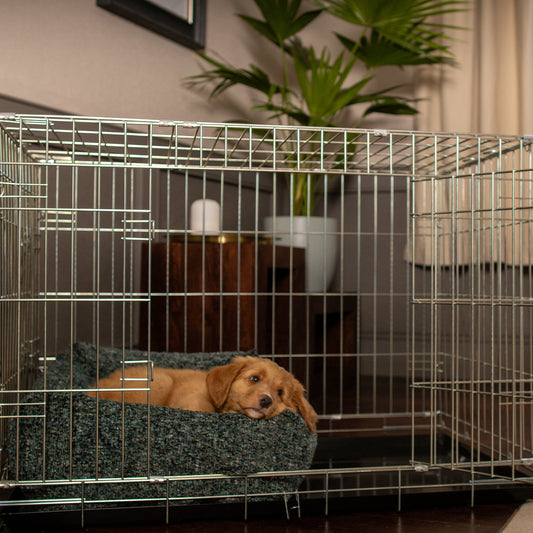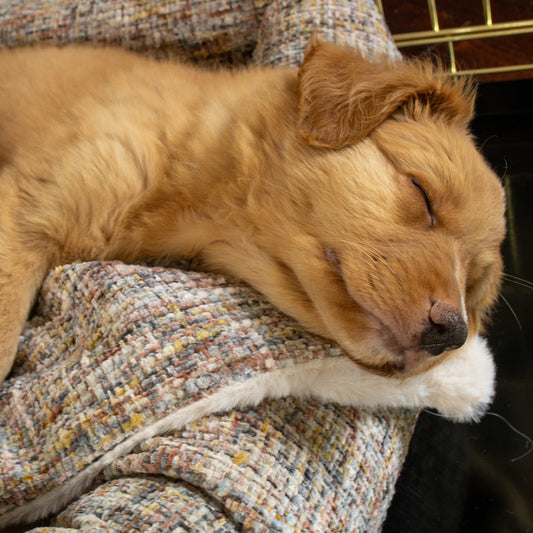Adding a pet into the equation is a big step for any relationship, as this holds a whole new level of responsibility and commitment for both sides.
Though parenting a pet is a highly rewarding and entertaining experience for couples, these loveable creatures require a lot of love and attention – alongside caring for both yourself and your partner too!
Whether you’ve adopted a cat, a dog, or both, finding the perfect balance of caring for your significant other and your pet can prove difficult for many, and failing to set some much-needed rules and boundaries for your four-legged friend, especially when it comes to sleeping arrangements, can have a significant impact on the happiness of all involved.
With this in mind, we conducted a study to find out how the sleeping habits of the nation’s beloved pets are impacting their sex lives, as well as examining how many UK adults admit to putting their love for their pet above their partner.
How are the nation’s pets affecting Brits’ intimacy?

Upon analysing the data, it’s clear to see that our four-legged friends can act as a hinderance when it comes to having intimate moments with a lover, as four in ten Brits stated that allowing their furry friends to sleep on the bed has affected their sex life in some way (41%).
Though it seems that stubborn pets and their preferred place to snooze are not the only ones to blame, as the findings revealed that nearly one million UK adults across the nation (832,557)* admit to using their pet sleeping on the bed as an excuse not to have sex with their partner.
Emotions play a big part here too, it seems, as one in nine (11%) confessed that their pet’s sleeping arrangements have affected their sex life as they feel too guilty to move their pet when they find them napping on the bed. In fact, a fifth will only actually have sex if they can actually bring themselves to move their snoozing pet (23%) from the bed.
In terms of who’s more likely to move their sleepy pooch in order to make time for some much-needed intimacy, double the number of women (14%) admitted to having less sex because they feel guilty moving their sleeping pet from the bed than men (7%).
Though it’s not all bad news for loved-up Brits, as six percent of those surveyed said that their pet sleeping on the bed has encouraged them to get more creative with their sex lives, exploring different places around the home rather than moving the sleeping cat or dog.
Belfast residents have their sex lives affected the most by sleeping pets

When examining regional-specific data, Belfast was found to have the highest percentage of residents who said their pet sleeping on their bed had affected their sex lives in some way (61%), followed by Glasgow and Manchester (both 55%).
Also high up on the list of the cities were Edinburgh (48%) and London (47%), with almost half of residents within each of the cities having had their sex lives affected by their sleepy pets occupying the bed.
In contrast to this, Norwich had the lowest percentage of affected residents (17%), followed by Liverpool (26%) and Southampton (28%).
|
UK City |
% of residents who say their pet sleeping on their bed has affected their sex life in some way |
|
Belfast |
61% |
|
Glasgow |
55% |
|
Manchester |
55% |
|
Edinburgh |
48% |
|
London |
47% |
|
Bristol |
44% |
|
Leeds |
41% |
|
Cardiff |
40% |
|
Birmingham |
33% |
|
Nottingham |
33% |
|
Sheffield |
32% |
|
Newcastle |
30% |
|
Southampton |
28% |
|
Liverpool |
26% |
|
Norwich |
17% |
We spoke with Dennis Relojo-Howell, Managing Director of Psychreg, who shared his insight as to why we feel so guilty when it comes to our pets, and why it is integral to set boundaries:
“Pets hold a special place in our lives due to several reasons. First, they offer companionship and unconditional love – fulfilling our innate need for social connection. This bond can be so strong that it sometimes rivals our relationships with fellow humans.
“Second, as a myriad of research has shown, pets help reduce stress and anxiety by offering a soothing presence, which can lead to the release of oxytocin, a hormone associated with social bonding and trust. This creates a positive feedback loop, further strengthening our attachment to them.
“Pets can also give us a sense of purpose, responsibility, and structure, contributing positively to our mental well-being. However, the deep bond with pets can sometimes affect our relationships, especially when our partners feel left out or when pets become a source of conflict.
“To maintain a healthy balance, it's important to establish clear boundaries with our pets. This can include designated pet-free zones or times when pets are not allowed on furniture or in specific rooms. Ensuring that you prioritise quality time with your partner without the presence of pets is crucial as it helps maintain the emotional connection between you and your partner, reinforcing the importance of your relationship.”
Brits are spending more quality time with their pet each day than their other half, study reveals
We also quizzed participants on the amount of quality time spent with their pet versus that spent with their lover and found that Brits are spending an average of seven hours quality time per day with their pets, versus six hours with their partner.
According to the findings, women are reserving more quality time for their pets (eight hours per day on average), than they are for their other halves (six hours). For men, it was a different story, with six hours of quality time for pets vs. seven hours for partners.
It’s no secret that pets love being spoilt and fussed over, but more than half of Brits (56%) admitted to giving their pets treats more frequently than they do their spouse, and a further half are more likely to use pet names for their four-legged friends too (49%).
More than a third (35%) also admitted to cuddling their beloved pet more often than they do their partner, and a further quarter (28%) even admitted to saying the words “I love you” more frequently to their furry friends!
After a long day at work or on a lazy Sunday afternoon, Brits up and down the country are partial to a quick nap in order to recharge their batteries. However, according to our findings, a quarter (27%) of the nation say they do this more frequently with their pet rather than with their spouse. A further fifth (16%) say they do this equally with both.
That said, 43% of UK adults say they’re more inclined to tell their pet off then they are their other half. For just a fifth (18%), it’s the other way around.
|
Activity |
% of UK adults who do this more with their pet than their partner |
|
Give them treats |
56% |
|
Call them pet names |
49% |
|
Cuddle them |
35% |
|
Tell them I love them |
28% |
|
Take a nap with them |
27% |
|
Kiss them |
26% |
|
Buy gifts for them |
25% |
|
Go out for the day together |
22% |
|
Go out for food and drinks |
18% |
|
Buy them clothes |
15% |
And they called it puppy love: Women are more likely to pick their pet over their partner

As part of our study, we also wanted to uncover whether Brits would be more inclined to pick either their partner or their pet if forced to do so.
Interestingly, the findings revealed that the UK is a most certainly a nation of loyal pet lovers, with more than one in six UK adults having opted for their pets rather than their partners if forced to choose between the two (16%).
A fifth of those surveyed admitted they’d find it hard to pick between the two (21%), whilst almost one in ten said they’d rather go it alone and opt for neither (9%).
The data highlighted that women are more likely to pick their pet over their partner (18% vs.12% of men). Similarly, more women said they’d struggle to make the decision between their partner and their pet (24% vs, 17% of men).
The cities of Norwich and Sheffield had the highest percentage of residents who say they’d pick their pet over their partner if asked to decide (23%), while those living in Manchester would be more likely to leave both their pet and partner behind and go it alone (24%). Edinburgh was seen to have the highest percentage of respondents who would pick their partner over their pet if asked to make the choice (67%).
How to create all-important boundaries and encourage pets to sleep in their own space

As much as we adore our pets, setting boundaries and sticking to them is an essential part of being a responsible pet owner. And whilst it’s natural to want to ensure your pet feels both loved and appreciated, it’s integral we’re showing our partners how much we love and cherish them too.
If you are able to set clear boundaries with your pet in the bedroom, namely in regard to where your pet goes to sleep at night, this can be hugely beneficial to the relationship you have with your other half, especially when it comes to maintaining a healthy level of intimacy.
Following these rules may help to encourage your pet to sleep in their own space, and hopefully stay there:
-
Firstly, create a cosy place for them to sleep that they know belongs to them.
-
This is followed by setting and practising clear commands such as ‘go to bed’ or ‘on your bed’ that you say each night at bedtime can help both of you to get into a good routine.
-
When using the command, show your pet what you would like them to do and where you would like them to go.
-
Be consistent and ensure you’re rewarding them when they do follow your lead here.
-
And, if your dog leaves their bed during the night, ask them to get back onto their bed and offer a treat.
-
If they wake again, do not give them a treat, simply use the command and ask them to get onto their bed.
Conclusion
At Lords and Labradors, we pride ourselves on putting your pet's wellbeing first. This includes setting healthy boundaries in their home to ensure that your fluffy friends are properly trained and living the best quality of life.
However, this is not to forget that your own personal relationships should not have to experience strain due to your pet’s sleeping habits. After all, a happy home is the best environment for your pooch to reside in.
We hope that this study will prompt you to practice healthy boundaries with your pets, potentially by using some of the tips that are on offer in this article. Why not share some of your pet’s sleeping areas with us on Twitter?
Data Sources:
-
Survey of 2,000 UK adults conducted in March 2023
-
* Almost 1million pet owners determined by -
-
52% of UK adults own a pet, according to PDSA data in 2022
-
52 % of UK adult population (53,369,083) = 27,751,923.16
-
3% of pet owners who said they use pet as excuse not to have sex. So 3% of 27,751,923.16 = 832,557
























































